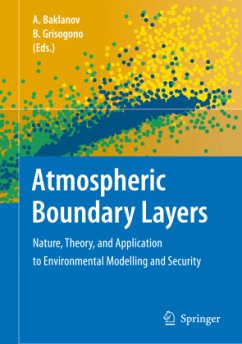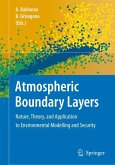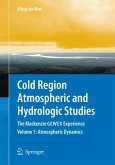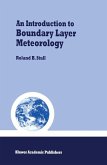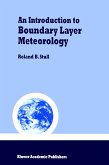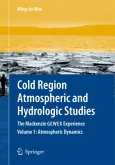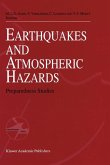This volume presents peer-reviewed papers from the NATO Advanced Research Workshop on Atmospheric Boundary Layers held in April 2006. The papers are divided into thematic sessions: nature and theory of turbulent boundary layers; boundary-layer flows: modeling and applications to environmental security; nature, theory and modeling of boundary-layer flows; air flows within and above urban and other complex canopies: air-sea-ice interaction.
Most of practically-used turbulence closure models are based on the concept of downgra- ent transport. Accordingly the models express turbulent uxes of momentum and scalars as products of the mean gradient of the transported property and the corresponding turbulent transport coef cient (eddy viscosity, K , heat conductivity, K , or diffusivity, K ). Fol- M H D lowing Kolmogorov (1941), turbulent transport coef cients are taken to be proportional to the turbulent velocity scale, u , and length scale, l : T T K ? K ? K ? u l . (1) M H D T T 2 Usually u is identi ed with the turbulent kinetic energy (TKE) per unit mass, E ,and K T is calculated from the TKE budget equation using the Kolmogorov closure for the TKE dissipation rate: ? ? E /t , (2) K K T where t ? l /u is the turbulent dissipation time scale. This approach is justi ed when it T T T is applied to neutral stability ows, where l can be taken to be proportional to the distance T from the nearest wall. However, this method encounters dif culties in strati ed ows (both stable and uns- ble). The turbulent Prandtl number Pr = K /K exhibits essential dependence on the T M H strati cation and cannot be considered as constant.
Most of practically-used turbulence closure models are based on the concept of downgra- ent transport. Accordingly the models express turbulent uxes of momentum and scalars as products of the mean gradient of the transported property and the corresponding turbulent transport coef cient (eddy viscosity, K , heat conductivity, K , or diffusivity, K ). Fol- M H D lowing Kolmogorov (1941), turbulent transport coef cients are taken to be proportional to the turbulent velocity scale, u , and length scale, l : T T K ? K ? K ? u l . (1) M H D T T 2 Usually u is identi ed with the turbulent kinetic energy (TKE) per unit mass, E ,and K T is calculated from the TKE budget equation using the Kolmogorov closure for the TKE dissipation rate: ? ? E /t , (2) K K T where t ? l /u is the turbulent dissipation time scale. This approach is justi ed when it T T T is applied to neutral stability ows, where l can be taken to be proportional to the distance T from the nearest wall. However, this method encounters dif culties in strati ed ows (both stable and uns- ble). The turbulent Prandtl number Pr = K /K exhibits essential dependence on the T M H strati cation and cannot be considered as constant.

